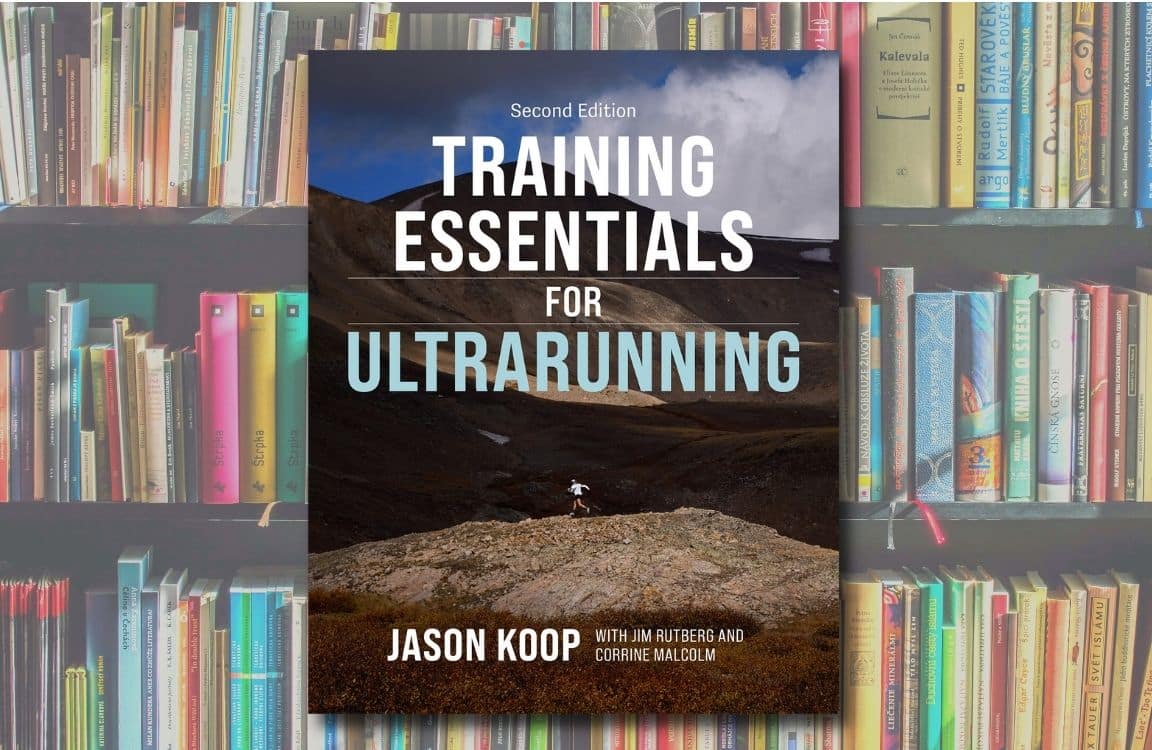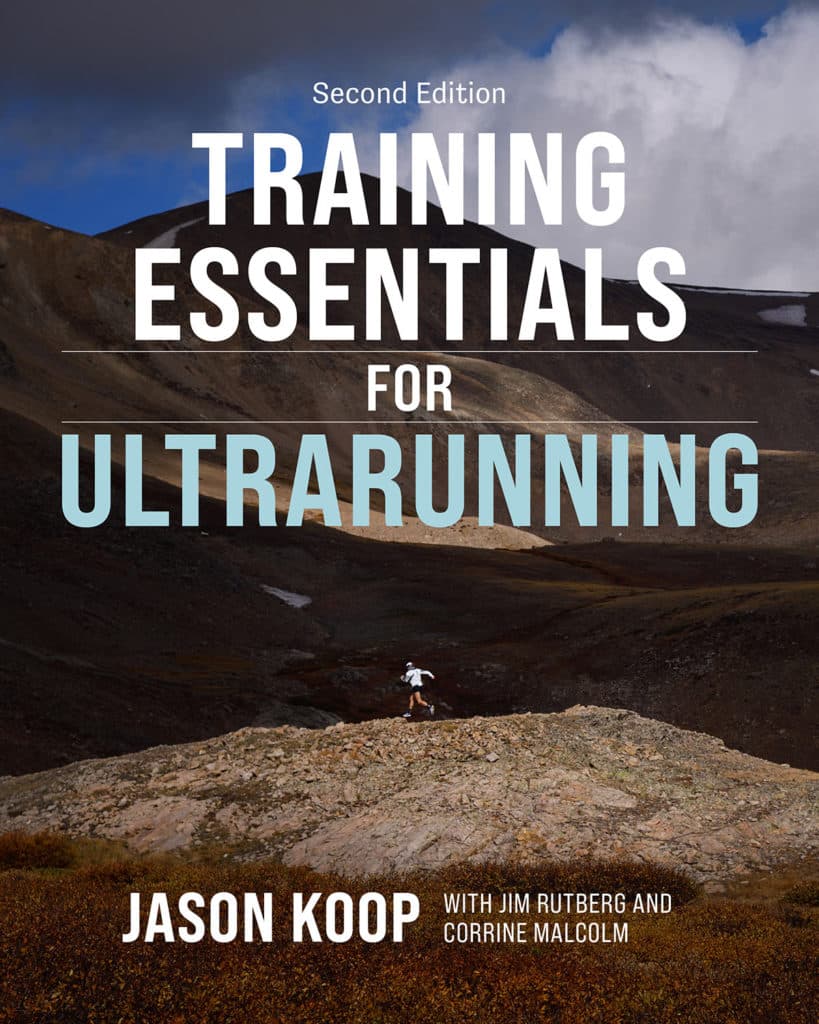
Discover What’s New in the Second Edition of Training Essentials for Ultrarunning
By Jason Koop,
Head Coach of CTS Ultrarunning
When I originally wrote the first edition of ‘Training Essentials for Ultrarunning’ in 2015, I wanted to create a work that could bridge a gap I perceived in the ultrarunning space. At the time, there was a gap between using anecdotal accounts to drive training and deriving training from best practices rooted in science. In contrast to one generation of ultrarunners simply regurgitating what their predecessors did, I wanted to approach the problem differently. I sought to analyze the demands of the sport and then, based on those demands, determine how to derive training that best helps athletes prepare. I felt the original book hit the mark in terms of that goal. It introduced many fundamental coaching and training concepts to a broader audience. After it was published, I went out to races and found many athletes and coaches who had adopted the training philosophies contained within the book and found success, even after years of stagnation. As time went on, I also realized there were aspects of ultramarathon training that I hadn’t touched on and there was new information I could add to the areas I had covered.
Fast forward to this week and the launch of the Second Edition of Training Essentials for Ultrarunning! The book is widely available in paperback, ebook, as well as an audiobook (narrated by yours truly). The book is a marked upgrade from the first edition with ~80% new content and weighs in at 522 pages in full color. Beyond the stats and figures, the process of writing it illustrated the recent expansion in the ultrarunning space, which seen over 40% growth in the US as compared to 2015. Marquee races like UTMB have been bought by bigger entities, demonstrating – via capital investment – that the growth is far from over. In addition, athletes are training smarter, as demonstrated course records that seem to be falling left and right. From Western States to Hardrock and last weekend’s Desert Solstice, it seems no record is safe from today’s elite ultrarunners. That improvement has been shared by the rest of the field, as finish rates continue to go up at the major ultramarathons year after year. Athletes and coaches now have a reasonable armory of scientific literature to draw from (see figure below for a PubMed search for ‘ultramarathon’ and related terms).
With that as a backdrop, the Second Edition of Training Essentials aimed to build on the legacy of the first. While the first book introduced relatively basic training concepts to the ultrarunning community, the second elevates the level of sophistication in existing topics and expands into areas that the first book didn’t even touch.
Ultrarunning is more than just running a lot
If ultrarunning was as simple as running a lot of easy miles, just about anyone could figure out a winning training formula. Yet, many athletes and coaches struggle to achieve continued improvement. I see this most from ultrarunners with 3-5 years of experience. They improve markedly during their first few years of exposure to the sport, then those improvements fall off dramatically as they get closer and closer to their predisposed ceiling. As a result, they can no longer reap substantial improvements simply through a larger volume of training. To improve they must be smarter about how they organize training and pay attention to the whole process. I have always advocated using smart training structure such as block style training and long range planning (though some coaches have criticized these approaches). Those training structures are still there, but the second edition also directs attention to many of the non-running aspects of trail and ultrarunning. Entire chapters are dedicated to strength training, mental skills training, recovery modalities and how to adapt to environmental conditions such as high altitude and heat. There is a whole section on women’s specific training considerations (written by CTS coach Corrine Malcolm). All these additions were driven by athlete and reader feedback.
Sure, anyone can run a lot of easy miles. And to a large extent, total training volume is going to drive a lot of adaptation. But flatlanders training for mountainous events wanted to know how to crack the climbing and descending code. Runners confused about when to take an ice bath or use a foam roller wanted clarity. Oft-injured athletes wanted to know if strength training is right for them and how to do it correctly. Every single athlete is limited by the time they can spend training. All the attention paid to non-running parts of training in the second edition is designed to help you make the most out of the running you can do.
Enjoying This Article? Get More Free Running Training Tips
Get our coaches' best training advice, delivered straight to your inbox weekly.
It takes a village
Writing the first edition of the book, I largely felt as if I were on an island. Sure, I reached out to my fellow coaching colleagues, preeminent biomechanist Roger Kram, and former Western States Medical Director Mary Hoffman for clarity around specific aspects of the book. But, by and large, the first edition was a creation of my own making. For the second edition I brought in reinforcements. This started with an additional co-author, CTS Coach Corrine Malcom, who I recruited to write the women’s section as well as the environmental considerations chapter. I extended that philosophy by bringing in coach and former Western States winner Stephanie Howe, PhD, and Nick Tiller, PhD, to review the scientific content of the entire manuscript.
Although Coach Howe might be a household name to many readers, I realize Nick Tiller might not be, so let me explain. Nick is an avid ultramarathon runner and a senior researcher in applied physiology at Harbor-UCLA, a columnist at Skeptical Inquirer Magazine, and an accredited physiologist with the British Association of Sport and Exercise Sciences (BASES). Most importantly, he is the author of ‘The Skeptic’s Guild to Sports Science’, which is exactly the type of scrutiny I was looking for. After all, if I am going to preach an evidence-based approach to training, I better be willing to have that evidence scrutinized by some of the brightest minds in the field. And Nick and Stephanie did just that. Each of them separately went through the entire manuscript and returned red-line versions of the book that raised the quality and accuracy of the finished product immensely (and made me eat a fair share of humble pie in the process).
But the village building did not stop there. I brought in Dr. Justin Ross to assist with the mental skills chapter. Coach and strength training specialist Sarah Scozzaro wrote much of the strength training chapter. Co-author and veteran of nine previous book projects, Jim Rutberg, penned the specific recovery modalities chapter. Even our former intern Jackson Brill lent a hand on pieces where his run-to-walk transition research was applicable. All of this was an effort to bring true expertise to bear on the subject matter, not just my own views.
However, the build-a-village strategy was no more apparent than in the enhanced audiobook. The 17-hour audiobook is interspersed with interviews from domain experts like the renown Stephen Seiler, Iñigo Mujika (who literally wrote the book on tapering), Dr. Emily Krauss (an experts on RED-S), biomechanist Wouter Hoogkamer (see sample from audiobook below), ultrarunning training architect Guillame Millet and others. It’s a true murderers’ row of domain experts, the like of which I never thought I would be able to gather for a single project.
The goal behind all that effort was to deliver the most accurate, relatable, and comprehensive book possible. But in a broader sense, it’s a reflection of what ultrarunning is about in the first place. Ultrarunning is more than just running copious miles and hours by yourself. It’s a lesson and a teacher, a conduit to build confidence and eat humble pie. And it’s an exercise in building a community you can leverage while also learning to rely on yourself when it matters most. I hope you all enjoy the book. It was a delight to produce, and I’m honored to have it available to the public.


Comments 7
Pingback: Ultramarathon Daily News | Thurs, Jan 13 - Ultrarunnerpodcast.com
Amazon and audible don’t show the audio book. When will it be available?
Sounds promising and fascinating.How does it compare to/overlap with the UESCA Ultrarunning Coach Cert?
Really excited about this. I was wondering what would be new in the 2nd Edition. I’ve read the first edition cover to cover more than once, refer to it often, have it tabbed and highlighted throughout. I find much of the content applies to ultra-distance cycling as well. I let my wife know that I’m hoping to find the second edition under the Christmas tree on the 25th!
excited for this!
Will this be sold at other stores as well? I prefer to not support Amazon but definitely support Koop and his work.
Same here, if I can avoid Amazon and preferably buy at my local book store, i would prefer.